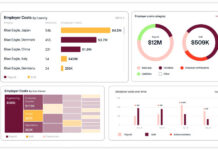
Nearly 40 percent of all internally made ethics and compliance complaints were received via methods such as face-to-face meetings and emails rather than more traditional reporting hotlines in 2017, demonstrating the importance of offering multiple reporting channels to employees.
 According NAVEX Global’s 2018 Ethics & Compliance Hotline and Incident Management Benchmark Report, “a remarkable 64 percent of these reports were substantiated–up from 46 percent in 2016. The takeaway, NAVEX Global said, is that reports from all sources should be documented if a company is to understand the full range of issues it faces, and also highlights the need for managers to be properly trained to respond appropriately when employees bring issues to them.
According NAVEX Global’s 2018 Ethics & Compliance Hotline and Incident Management Benchmark Report, “a remarkable 64 percent of these reports were substantiated–up from 46 percent in 2016. The takeaway, NAVEX Global said, is that reports from all sources should be documented if a company is to understand the full range of issues it faces, and also highlights the need for managers to be properly trained to respond appropriately when employees bring issues to them.
Overall, the number of complaints substantiated last year increased to 44 percent, a 10 percent increase from 2016, NAVEX said. The report also found “a notable increase” in the rate of substantiated reports related to HR, diversity and “workplace respect.” That rate rose from 38 percent to 44 percent.
Carrie Penman, NAVEX’s chief compliance officer and senior vice president of advisory services, called the increases “notable” and “an indication of maturing programs.” Higher quality and more actionable reports received through both hotlines and other channels enable more thorough investiagations, she said. However, she noted, employers “need to have sufficient resources available to review incoming reports in a timely way.”
More Reporting on Harassment
The upward trend in substantiation of HR-related cases should be of particular interest to compliance and HR professionals, Penman said. “This finding highlights the importance of allowing HR-related reports to come through the hotline directly.”
Not surprisingly, the report showed a slight uptick in harassment-related reports during last year’s fourth quarter, which coincided with the #MeToo movement’s rise. “Of note and concern,” was the declining rate of the “already low number of reports of retaliation” coming in through internal reporting systems. That rate dropped from 0.93 percent in 2016 to 0.66 percent in 2017.
Although victims of retaliation tend to take matters outside of their organization, NAVEX said the substantiation rate of reports that were made internally rose to 32 percent—its highest level ever—from 26 percent. Perman warned executives and compliance leaders not to “be lulled into a false sense of security by the very low number of reports of retaliation coming in to their organizations.” Such low reporting doesn’t mean incidents aren’t occuring, and organizations “need to proactively address and monitor this issue to ensure more progress is made.”
Copyright: ipopba / 123RF Stock Photo















